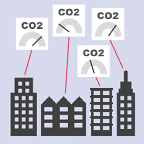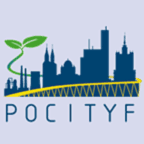
Calculation of the carbon footprint in the forestry sector
A public entity with responsibilities in the field of forestry management has requested advice from ITeC to ensure that their carbon footprint calculation methods are the right ones for the entity’s purposes. ITeC has prepared a tailored training program to update the staff’s knowledge and skills using the BEDEC Sustainability database and the TCQiGMA software. Particular attention has been paid to the correct assessment of sustainability in public tendering.

INDICATE project: collecting building-level WLC data in Europe
Europe is facing a big challenge when it comes to decarbonise its buildings: the lack of data to support policymaking and strategic business decision-making. The goal of INDICATE is to collect Whole Life Carbon (WLC) data from real buildings to support the demand for product-level life cycle assessment (LCA) and to set WLC benchmarks. Data collection must be coherent (all project partners will agree on a common methodology) and comprehensive (different building systems, climatic zones and use cases will be represented on the sample)

“Hardwood for the Home” project: new wood construction system
In this LIFE HFH project, new construction products will be developed using wood sourced from Spanish forestry operations, which will be the basis for a construction system for multi-family buildings. The system must satisfy two conditions: on the one hand, it must be ready for CE marking to enter the construction market immediately; and on the other, it must be competitive enough to be prescribed in public housing projects.

Training course on nZEB for public administrations
Compliance with the Spanish nZEB near-zero consumption standards in new buildings and major renovations is no longer voluntary since it is becoming progressively mandatory. The buildings belonging to or occupied by public administrations are expected to be the first ones in the process, which means that the personnel in charge of prescribing, tendering and managing these projects should be familiar with nZEB criteria. ITeC is carrying out training courses specifically aimed at this profile of public employees.

Accord Project: automated check of compliance with requirements to expedite the issuing of construction permits
Getting construction permits is a bottleneck for the sector, and it could get worse if environmental verifications become increasingly demanding. The Accord project will develop tools to automate these procedures, using BIM to review CO2 emissions and circularity. ITeC provides its knowledge and experience in construction regulations and in BIM methodologies and tools (BIM libraries and software in the cloud) to ensure a proper operation of the new Accord tools.

POCITYF project: smart cities prioritizing energy and heritage issues
POCITYF (A Positive Energy CITY Transformation Framework) is a EU-funded project for transforming European cities into more efficient, healthy, sustainable living environments with “positive energy districts”, this is, groups of buildings that actively manage their energy consumption and the energy flow between them and the wider energy system. The overall aim is to help cities deliver positive energy districts while respecting their mixed urban settings that often include heritage assets.

Environmental measures in an urban reform project
Before the tender of a large-scale urban reform operation (> 150 MEUR), the developer wants to ensure that it is projected and executed in accordance with sustainability standards that must be defined in advance. To this end, ITeC has been entrusted with drafting a environmental brief for the contractor where it specifies a verifiable method for calculating of CO2, energy and waste impact, and for the correct management of waste.

Houseful project: eco-innovation and circular economy in residential construction
In this European project new building solutions are developed to optimize generation of waste and consumption of water, energy and material resources throughout the whole life cycle of the building, to be demonstrated in four large apartment buildings. ITeC participates in the BIM aspects of the project and its monitoring, and in the creation of a methodology to quantify the degree of circularity of the building.

Upgrade of ITeC’s database with Recycled Content Products
There is a demand for construction products that are manufactured from recycled materials, which often does not materialize in practice because they have not been explicitly specified in the project stage. To overcome this obstacle, ITeC's database of construction elements has been expanded to include a series of products in which recycled plastic, recycled rubber (from out of use tires), steel slag or recycled glass can be found in its composition. Each of them has its price, technical specs and environmental data, so prescribers can use them in the project as easily as the rest of the products of the database.

Tool for quick estimation of CO2 emissions in civil engineering projects
It provides civil engineers with CO2 emission values during the process of designing infrastructure projects. It is a web tool where the user can choose among different technical options for the key types of work, enter the quantities and get an amount of CO2 emissions automatically. As a result, it is possible to make project decisions taking into account the environmental footprint.



